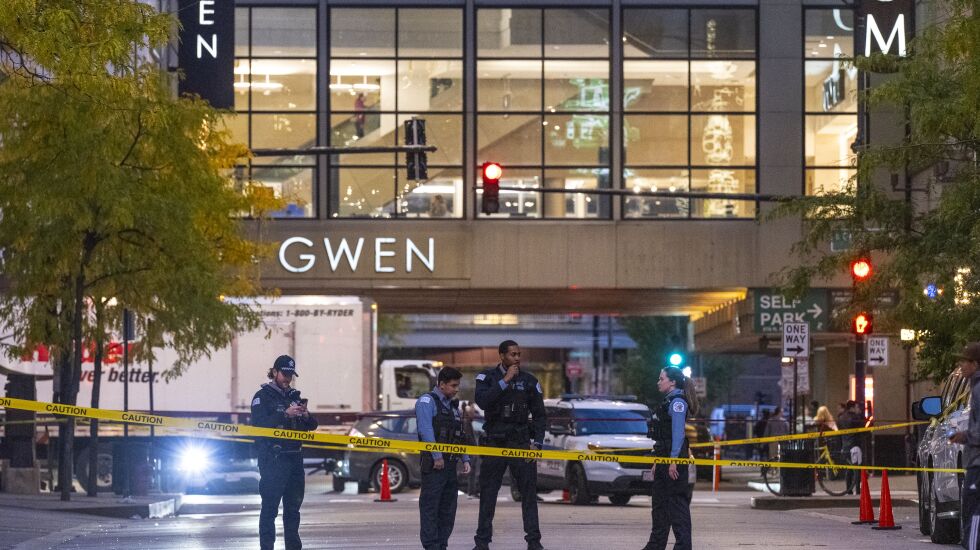
As a 21-year-old college dropout working at a children’s psychiatric hospital in Hyde Park, I frequently took the CTA Red Line from the mostly empty 55th Street station to the Fullerton stop near my Lincoln Park apartment at 2 a.m.
I would occasionally share the platform and train with a few sketchy folks, but it was routine.
A few years later I started a four-decade journalism career covering news — crime, then education, then heavy-duty politics — day and night in every Chicago neighborhood, including treks up the stairs of public housing high-rise buildings with out-of-service elevators.
And I was rarely anxious or afraid over those many years. I felt safe in my “sweet home Chicago,” even when I traveled alone on foot or on public transportation.
But things have changed drastically for the worse recently, for me and our city, for reasons I still don’t fully understand.
On a ride to the Loop on the CTA Blue Line from O’Hare at 11 p.m. a few months ago, in a mostly unoccupied car, the folks who stood around the exit doors creeped me out with their stares and apparent disorientation.
Sure, I’m a 75-year-old senior now, long past the “bulletproof” vibrancy of youth — but I feel like the same person, only traversing a different city that has many more palpable threats.
My newfound apprehension reached a high point a few weeks ago, after dinner with a daughter and her family in Logan Square.
I had been reading about the epidemic of armed robberies in hers and other North and Northwest Side neighborhoods over the summer and into the fall: Small bands of men, masked and armed, exiting cars on neighborhood streets to stick up people walking alone, occasionally assaulting them during the holdup, then jumping back in a car to move on to other targets a neighborhood or two away.
As many as five similar incidents in a single night.
Then, not long ago, I watched the horrific, now-viral video of a young man viciously beaten and robbed by two assailants as he walked through a North Side alley carrying a pizza.
The impact of that video, and news accounts of the robbery sprees, prompted an embarrassing first: My reluctance, based on fear, to walk the half-mile from my daughter’s house to the Blue Line on dark city streets at 9 p.m.
Instead, I took a Lyft back home.
It epitomizes a new Chicago reality for me: a fear factor.
I know this is nothing new for thousands of city residents who’ve been victims of similar wanton crimes on the south and west sides. They have every right to think, or even say, “Andy, welcome to a club no one wants to belong to.”
Searching for ‘what’s changed’
But here we are, and I’m still wondering what’s changed. The adverse effects of pandemic hardship and isolation? A brazen confidence that ineffectual law enforcement makes apprehension unlikely?
Or maybe it’s as simple as Willie Sutton’s iconic 1952 answer when a reporter asked him why he robbed banks. “Because that’s where the money is,” he supposedly replied.
It was heartening to hear about the intermittent success of beefed-up efforts to catch these robbers and the willingness of judges to keep some of them behind bars, despite the elimination of cash bail in most cases.
Enhanced police presence in recent months has thankfully reduced last year’s epidemic of shoplifting, robberies, assaults and flash mob gatherings that plagued areas in and around downtown and lakefront neighborhoods, so maybe the new focus on these robberies will have a similar effect.
And, of course, we can hope for a positive long-term impact of institutional efforts to improve education, job training, mental health and addiction services, and face-to-face violence interruption and intervention strategies.
In the meantime, this once fearless, self-assured city traveler — now a wary senior — will try not to become a statistic by taking unnecessary chances at inopportune hours.
I won’t stay home barricaded behind locked doors. But I sure as hell won’t walk alone down any deserted neighborhood street after dark until Chicago feels more like the city I used to know.
Andy Shaw is a retired Chicago journalist and good government advocate.
The Sun-Times welcomes letters to the editor and op-eds. See our guidelines.
The views and opinions expressed by contributors are their own and do not necessarily reflect those of the Chicago Sun-Times or any of its affiliates.







